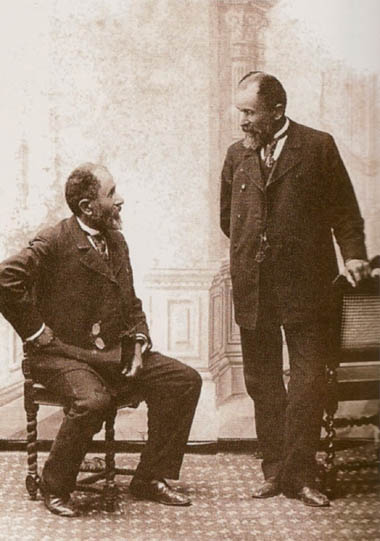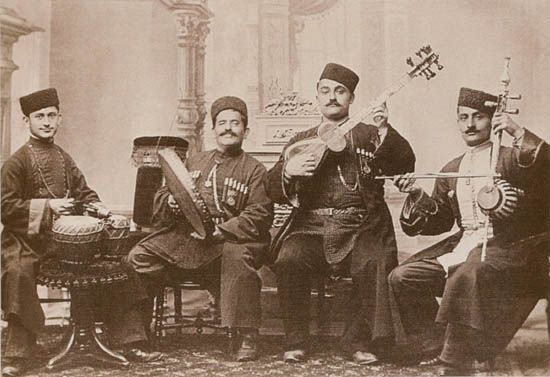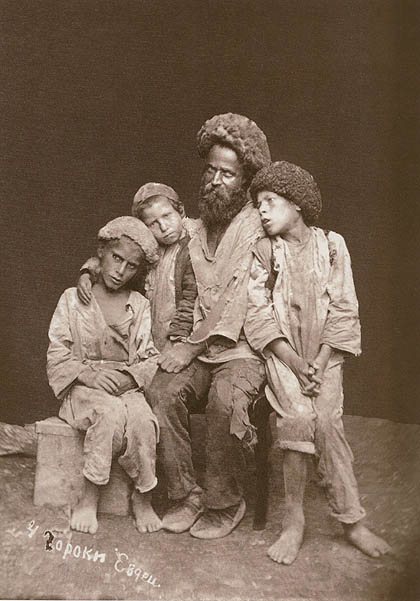

Last year, we published a first set of photos by the Georgian photographer Alexander Roinashvili (1846-1916). They were essentially portraits taken in his studio in Tiflis – today Tbilisi –: of aristocrats, soldiers and poets, princesses and actresses and families – all these various faces of the numerous peoples of the Caucasus.
The photos of this second post reflect another part of his work: the eight years beginning with 1880, when he lived and traveled all over the Caucasus, from Kakheti to Dagestan. There he not only took pictures, but also collected artifacts, which later enabled him to be a founder of the Museum of Caucasian Antiquities in Tiflis, the later Historical and Ethnographic Society hosted at the Tbilisi University, whose collections are nowadays kept in the Georgian National Museum.
Unlike the photos of the earlier post, these pictures were taken outdoors, like those of his friend Yermakov: photos of landscapes, of the mountains along the Georgian military road, mountains and villages in Dagestan, where Roinashvili settled for years; ruins of Armenian churches and fortresses in modern Armenia, or in the then Russian territory of the northeast of present-day Turkey.

And there are still quite a few portraits, which once again reflect the ethnic diversity of the peoples of the Caucasus: Armenians, Georgians, Tatars, Lazes, Lezgians, Mountain Jews from Azerbaijan. Photos recalling far away times: the Khevsur warriors in chain-mail, mekize (masseurs) in the baths of Tiflis standing on the back of their “patients”, and all these serious women with stern faces under their veils.
There Roinashvili joined the concerns of the ethnographers of his time. Most of these photographs, taken in the studio, with diffuse lighting, expose the faces frontally and in profile with an annotation on the negative, indicating the respective ethnic group. The mid-body framing of the sitting subjects emphasize their costumes and jewelery. The few shots of groups are less formal, even if most of them were also realized in the studio.
Other, even rarer photos show us the crowd – crowd in a street, crowd in a market, crowd gathering for a festival, their eyes looking at us.































































3 comentarios:
You have Roinashvili living 1846-1916, but attribute the photos of the second post to the "eight years beginning with 1800, when he lived and traveled all over the Caucusus". Perhaps 1900?
Dear me ! 1880 of course.
Sorry, Walter, it’s my typo. The year is 1880. Now I correct it.
Publicar un comentario